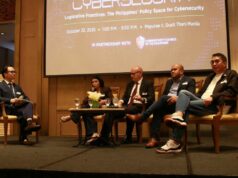BUSINESSWORLD INSIGHTS: State of Internet Connectivity in the Philippines
By Bjorn Biel M. Beltran, Special Features Assistant Editor
The new world brought about by COVID-19 is in many ways — economically, socially, and culturally — a digital one.
For many industries all over the world, digital transformation has allowed companies to stay in operation while weathering preventive quarantine measures. Online marketplaces and e-commerce platforms have taken over retail, and social media platforms have allowed people to stay connected while physically apart.
Needless to say, the internet is allowing the world to have some semblance of connection at a time when it is most needed. But what about the parts of the world that do not have internet?
“A digital divide exists in the Philippines,” declared Senator Grace Poe during her opening remarks on the first leg of BusinessWorld Insights Connectivity Series.
“According to the 2019 National Household Survey, while there are Filipinos who enjoy access to the internet, a majority of them do not,” she said. She added that in places like the Bangsamoro Autonomous Region in Muslim Mindanao, 94.9% of households do not have internet access. In the National Capital Region, only 32.3% of households enjoy internet access.
The first leg of BusinessWorld Insights Connectivity Series, with the theme, “A Connected Nation: State of Internet Connectivity in the Philippines,” aimed to discuss the current digital divide experienced by many Filipinos all over the country. The online forum series gathered experts from both the public and private sectors to discuss the country’s connectivity issues and the way forward.
Department of Information and Communications Technology Deputy Spokesperson Atty. Adrian Echaus urged support for government programs and collaboration with the telecommunications sector to push for better internet connectivity for Filipinos. One of the main concerns is building the necessary infrastructure for covering underserved areas of the country.
“Because of the lack of ICT infrastructure, we’re not able to reach the farthest areas right now. You have to think of it as building roads. There are highways, and there are also digital highways. If there are more paved roads, then you can get to your destination quicker,” he said.
Atty. Echaus said that establishing this infrastructure should not only be left in the hands of the private telecommunications operators but the government as well. Several government programs such as the National Broadband Program and the Common Tower Initiative seek to address this, with both programs aiming to facilitate easier construction of towers and securing internet capacity.
“We welcome the initiatives laid out by the government and we are fully committed to support all these endeavors,” PLDT-Smart SVP for Network Planning and Engineering Mario Tamayo said of the government initiatives.
Mr. Tamayo added that through such government programs, it will be easier for telecommunications companies like PLDT-Smart to evaluate their systems and capabilities, and offer better services for their consumers.
“Five years ago, we can say that our services leave a lot to be desired. We failed on all expectations. So we warmheartedly decided to start on a journey anchored on one thing, our customers. That meant customer centricity and customer experience,” he said.
“Since then we’ve made strides, steadily improving the quality of internet connectivity by introducing the latest technologies available for both fixed and wireless, as well as steadily improving our reach within the past few years. However, the work does not stop there. As I said, we are not satisfied.”
“Our main aim is to bring the Philippines, with the help of the government, to the level of the best in the region,” he added.
Such collaboration between the government and the private sector can usher in real change within the telecommunications industry. Globe Telecom Chief Technology and Information Officer Gil Genio stated that if the Philippines can reach 50,000-60,000 total cell towers in the next three years, from the current 22,000, the country can reach the level of internet penetration that its neighboring countries currently enjoy.
“Because of the changes that have happened recently and the commitment from all players, I’m actually optimistic and hopeful that we will get there,” Mr. Genio added.
This online forum, titled “The Connected Path: A Guide to Digital Transformation of Government and Businesses,” will have in the panel Bong Paloma, EVP for Technology, Sales and Marketing at AMTI; Frederic Levy, chief commercial officer for Transfers at Globe Fintech Innovations, Inc. (Mynt); Paolo Azzola, chief operating officer of Paymaya Philippines; and Shiju Varghese, country head of Tata Consultancy Services, Inc.–Philippines. BusinessWorld‘s senior reporter Arjay L. Balinbin will moderate the session.
Catch the second leg of BusinessWorld Insights Connectivity Series, with the topic “The Connected Path: A Guide to Digital Transformation of Government and Businesses,” tomorrow (Oct. 7) at 11 a.m., live and free on the Facebook pages of BusinessWorld and The Philippine STAR. The final run of the series is scheduled on Oct. 14 with the topic, “Internet, Technology and Education: Connecting Schools and Students in the New Normal.”
BusinessWorld Insights Connectivity Series is made possible by Tata Consultancy Services, Globe, AMTI, Dell Technologies, PLDT, Smart, media partner The Philippine STAR and e-learning platform partner Olern; with the support of the Philippine Chamber of Telecommunications Operators, Management Association of the Philippines, Bank Marketing Association of the Philippines, British Chamber of Commerce Philippines, Financial Executives Institute of the Philippines, Philippine Association of National Advertisers, and Philippine Chamber of Commerce and Industry.



